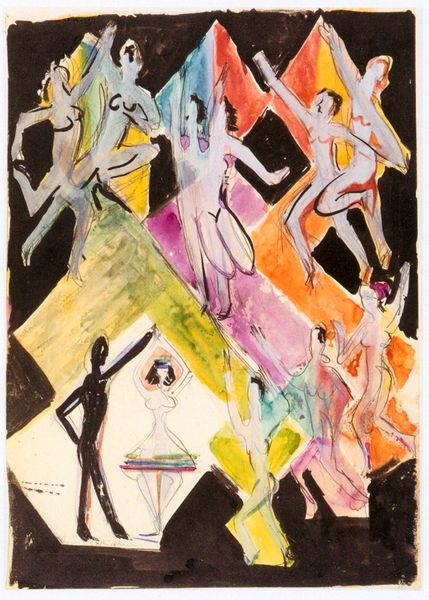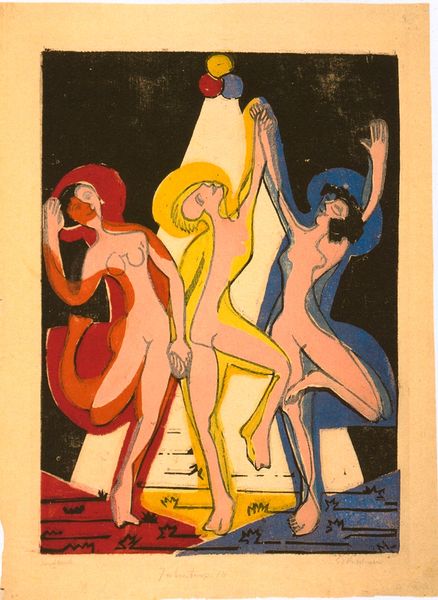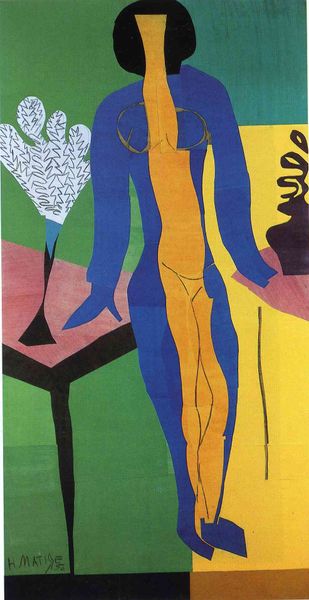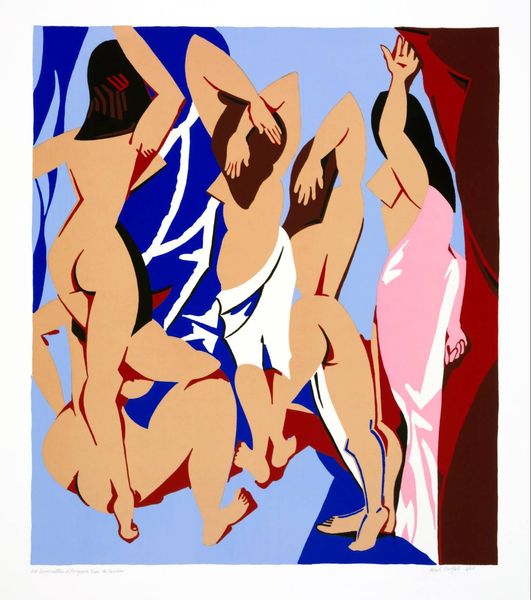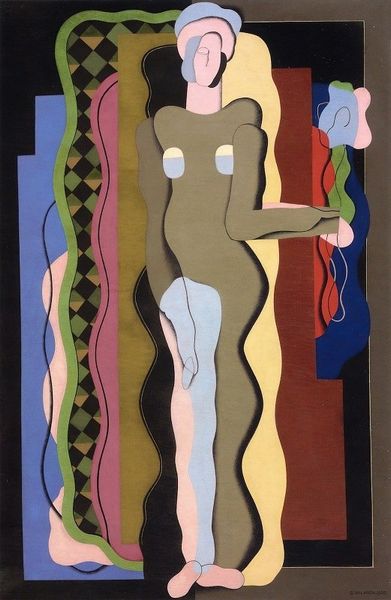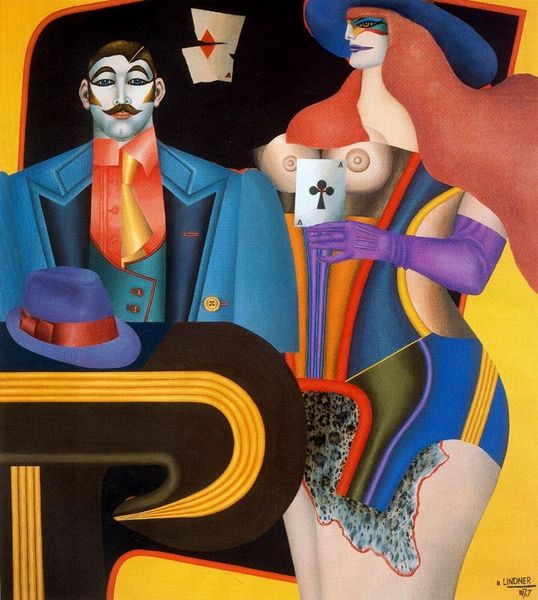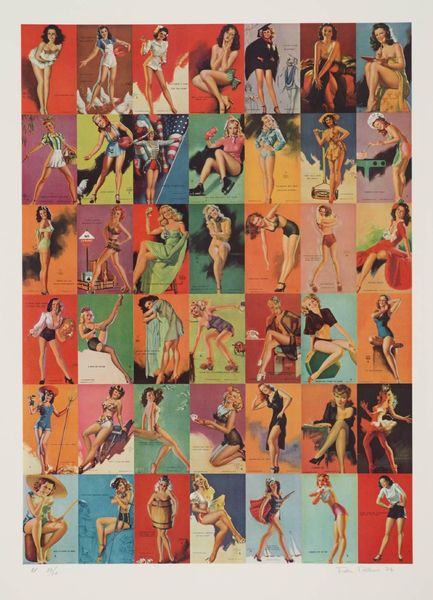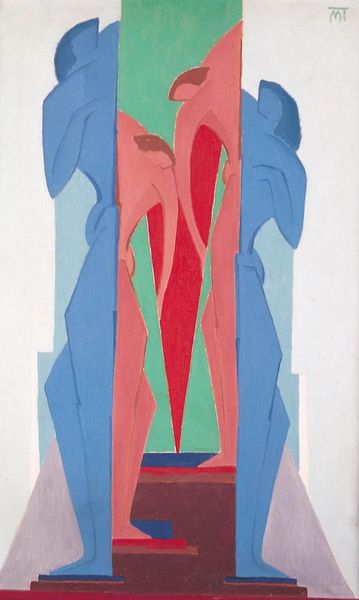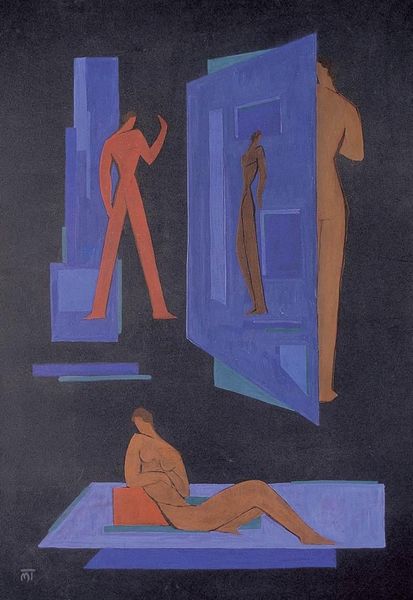
Copyright: Public Domain: Artvee
Curator: Ernst Ludwig Kirchner painted "dancing girls in colourful rays" sometime between 1932 and 1937 using acrylic paint. What are your initial thoughts? Editor: My immediate impression is of fragmented bodies emerging from sharp, angular forms. The bright colours against that deep black background feel jarring, yet somehow rhythmic. There's a tension in the materiality; that acrylic gives a flat surface, countering the implied movement. Curator: Exactly. Considering Kirchner's engagement with Expressionism, and how his work often navigates themes of alienation and social anxiety, the disjunctive forms can be viewed as symbolic. How might we interpret these women positioned within, or perhaps imprisoned by, these geometric shapes? Is this an expression of constraint within a burgeoning, tumultuous social and political landscape? Editor: Perhaps. The fractured planes could also represent the mechanized nature of modern life, and how labor extracts its toll. Kirchner might be critiquing how women’s bodies are processed—commoditized even—within this increasingly abstract environment. Consider too that the production of acrylic paint itself becomes linked to large-scale industry and standardization, quite unlike more hands-on media. Curator: Absolutely, and these bodies—disfigured or idealized according to various perspectives—ask viewers to acknowledge them in the complex milieu of modernism and anxieties about identity, sexuality, and societal place during that interwar period. Note especially the different poses – the angular positioning of some bodies alongside others suggesting a degree of meditative reflection, maybe an attempt at resisting the turmoil, the chaos of the rays. Editor: The repeated diamond motifs are compelling; how they serve as these prisms refracting the dancers, but also flattening them. What of the physical process—Kirchner’s application, how his brushstrokes emphasize line, flattening rather than sculpting. His decisions relating to technique feel crucial in conveying the artwork’s social commentary. Curator: Precisely. When considering all these elements, we gain a layered interpretation, addressing identity, social pressures and gender through this piece. It enables a further contemporary conversation, especially around representations of marginalized persons in historical work. Editor: And it draws attention to how artistic production both reflects and refracts those realities. It makes one think about the art’s physical and social journey from its inception to our present moment of engagement.
Comments
No comments
Be the first to comment and join the conversation on the ultimate creative platform.
